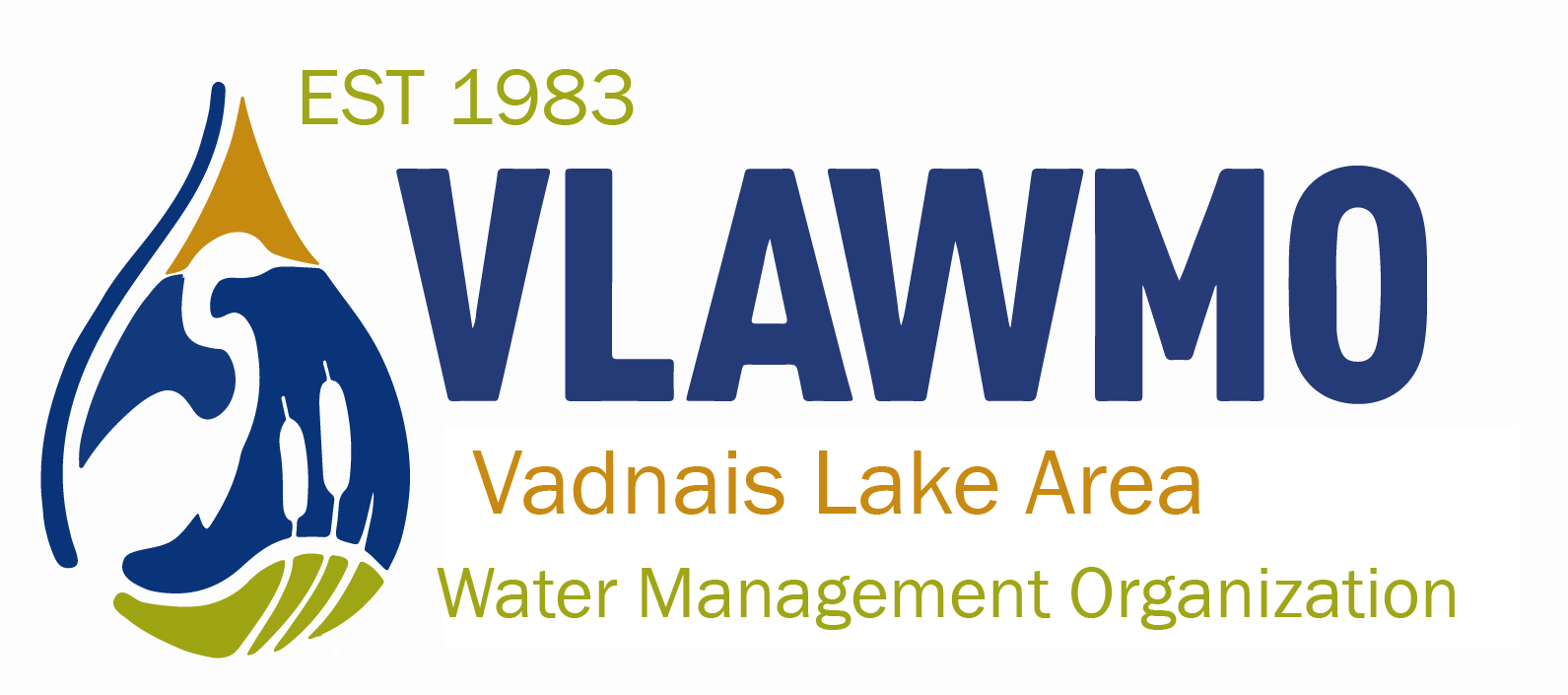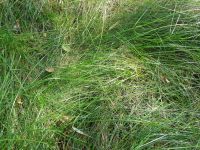Neighborhood Spotlight: Joe
Just a few years before this story, Joe was new to the topic of native plants and sustainable landscaping. As he observed water’s movement through his yard and its connection to the lake, he’s had several revelations on what landscaping and yard care can look like. Joe first applied for grant funding from VLAWMO’s Landscape Level 1 program to support the movement of stormwater from the street and both his and neighboring properties. In the existing condition a gully was forming, funneling runoff into Pleasant Lake. Initially concerned about the lake, his curiosity branched out to yard maintenance and soil health. The first raingarden project was complimented by a shoreline restoration, then to complete the sustainable landscaping hattrick, a lo-mow fescue lawn. VLAWMO is thankful for Joe’s enthusiasm and eagerness to dive in, try new things, and engage in conversations around land care and water resources.
Landscape chat with Joe:
What motivated you to go in this direction for your yard?
We are not getting any younger so we are interested in landscape improvements that lead to reduced maintenance. We learned more about native plants and discovered that lower maintenance is among their strongest features. The up front effort can lead to big rewards as the plantings become established.
As for grass areas, mowing on slopes and mowing unused sections of lawn seemed more like a bad habit than a rational plan. We wanted to establish a low input lawn. No mow fescue seemed like it might be a good fit.
We also had a low area where nothing could grow because run off water collected there and killed everything. At its worst during strong rain events, water and sediment ran directly into the lake. It met all the requirements for an ideal rain garden location.
How would you describe your planning process? What resources helped?
The University of Minnesota Extension has a wealth of information available on their site. The U of M Turf Lab also maintains test plots of grasses and other plantings that you can visit. It’s located right behind the fairgrounds.
What are your plans and hopes with the upcoming shoreline restoration?
Shoreline is a special responsibility. Everyone has an interest in keeping our lakes healthy because water quality affects us all. We are adjacent to a section of shoreline that had been neglected for years. Buckthorn and other invasives took over, shading and killing groundcover and promoting soil erosion.
By replanting the shoreline with native plants and grasses, in addition to the greatly improved aesthetics, the plants will hold the soil in place. It’s a project that is both functional and beautiful.
How did the raingarden blend into your existing yard and drainage set-up?
The raingarden is at a natural site for collection of stormwater runoff, at the base of a large ravine. The ravine collects runoff from the entire area such as across the street and delivers it to the lake. But because of the way ditches and drainage traditionally shed as much water as possible, most of the water going through the ravine used to wash into the lake. Now with the added help, more of it gets collected and absorbed into the ground.
What’s it like maintaining an alternative turf? What do you like about it?
Many of my neighbors are mowing Kentucky Bluegrass by the acre. Every week when I hear the army of lawn service mowers at work, I gaze lovingly at my no-mow fescue grass. But no mow does not mean no work. It requires help to get it well established but it’s so much easier overall and the inputs required are a small fraction of most common turf grasses. It also does very well in shady areas where old fashion lawns struggle. It may take some watering get it established but then it becomes highly drought resistant. Weeds are a persistent enemy but this battle also gets easier as it becomes established.
I have only mowed twice since we planted it, mostly just to see what would happen. I’m still trying to learn if should mow but it will never be more than one time per year. From a maintenance standpoint, it is the low cost, low labor champion. The only high-demand feature is that leaves MUST be fastidiously removed in the fall. Matted leaves will kill the grass.
The established fescue holds more moisture and needed no irrigation throughout the intense drought years of 2022-2023.
More on day-to-day maintenance details? Time spent maintaining in a month during establishment vs time spent in a month post-establishment?
How have all of these efforts changed your interaction with your yard? Any favorite sightings or things you’ve noticed?
As our yard consciousness and knowledge has increased we enjoy it more than ever. A happy moment spent noticing hummingbirds, butterflies or bees is a daily experience.
We also developed a new aesthetic sensibility. Traditional landscapes start to look unnatural and dated. Golf courses are rapidly adopting tall fescue. This will help people understand it’s beauty and promote its adoption. Lawn services continue to be a restraining factor due to a lack of knowledge and reduced maintenance requirements.
Any advice for other folks who may be interested in a raingarden, shoreline restoration, or alternative groundcover?
Just start. Reseed or over seed that shady or hard to mow area with fine fescue. Weed it and have the courage to let it grow. Install some native plants. But don’t think you can walk away. Weeds are the persistent enemy, especially as new plants become established. It’s a job that never goes away completely but there is no chance you will ever want to go back to your old landscape.









